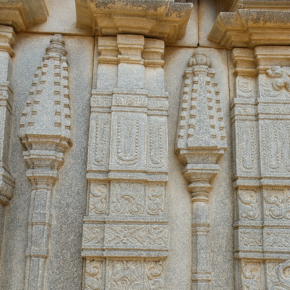Architectural Marvels of Gabbur
The small, sacred village of Gabbur in Raichur district, Karnataka, is more than just a pilgrimage destination — it’s a living museum of ancient South Indian architecture.
Once a thriving center during the Vijayanagara Empire, Gabbur is home to over 30 stone temples, each a masterpiece of intricate design, precise engineering, and divine inspiration.
Every pillar, carving, and shrine here tells a story of devotion carved into granite — a silent testament to the artisans of the Vijayanagara era.
The Legacy of Vijayanagara Craftsmanship
The Vijayanagara dynasty (14th–17th century) was one of India’s greatest patrons of temple art and architecture.
Their distinctive style — combining grandeur with detailed workmanship — can be seen in every temple of Gabbur.
From perfectly balanced stone mantapas (halls) to finely sculpted idols of Lord Venkateshwara, Lakshmi, and Shiva, the architecture represents both spiritual symbolism and technical brilliance.
The use of hard granite, intricate floral and geometric carvings, and mythological motifs speaks volumes about the mastery of stone craftsmanship during this period.
Hallmarks of Gabbur’s Temple Design
-
Intricate Pillars and Mandapas:
The temples feature tall, carved pillars supporting open halls used for rituals and gatherings. Each pillar tells a different story — from divine beings to warriors and musicians. -
Carved Garbhagrihas (Sanctums):
The sanctums are compact yet artistically designed, radiating divine energy. Stone door frames are adorned with floral bands and guardian deities. -
Stepped Temple Tanks:
The presence of stone pushkarinis (temple tanks) shows the emphasis on water conservation and ritual purity — a signature of Vijayanagara temple planning. -
Dravidian Gopurams (Gateways):
Though some have weathered with time, remnants of gopurams with tiered designs still stand tall, marking the grand entrances to these shrines.
The Architectural Marvels of Gabbur are not just stone structures — they are the heartbeats of a glorious civilization that celebrated beauty, balance, and belief.
Every temple stands as a timeless creation of faith and craftsmanship, inviting every visitor to pause and admire the divine art etched in stone.
To walk through Gabbur is to walk through history itself — where every pillar still whispers the prayers of centuries past.




